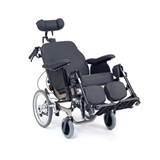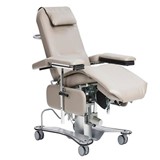Planning a physio fitout in Australia? Learn how to design efficient treatment zones, choose compliant equipment, and maximise space, even in small clinics. Actionable insights for new and growing practices.
Key takeaways
- Effective zoning improves workflow: Separating treatment, rehabilitation, and admin areas can increase patient throughput by up to 30% (Physiotherapy Business Alliance, 2023).
- Room size matters: A typical Australian physio treatment room should be at least 3m x 3.5m for compliance and comfort (APA Design Standards).
- Essential equipment costs: Expect to spend between $25,000 and $45,000 on foundational equipment including plinths, rehab gear, and digital tools.
- Space-saving solutions pay off: Foldable plinths and wall-mounted pulleys can reduce equipment footprint by up to 40% in compact clinics.
- Zoning boosts experience: Clinics that define active rehab zones vs. passive treatment rooms report a 25% rise in patient satisfaction scores (PhysioClinic Insights Report, 2024).
Introduction: Why space planning matters in physio clinic success
In 2025, Australian physiotherapy clinics are under growing pressure to deliver faster care, better outcomes, and more efficient operations. Whether you're launching a new practice or renovating an existing one, your clinic's physical layout and equipment selection are key to achieving those goals.
A well-optimised space doesn’t just look good—it enhances workflows, complies with standards, supports a safe patient journey, and maximises your return on investment. This guide is designed to help Australian physio practice owners make informed decisions about layout, zoning, and equipment that support a thriving clinic.
Planning your physio clinic layout
Understand your clinic's service model
Before finalising your fitout, clarify your clinic's primary services:
- General physiotherapy
- Sports injury and rehab
- Neurological or post-surgical rehab
- Paediatric or geriatric care
- Allied services (massage, pilates, hydrotherapy)
Each of these services has different space, equipment, and privacy needs.
Allocate space based on flow and frequency
Start with a basic zoning plan. Key areas should include:
- Reception and waiting: Comfortable, accessible area with at least 1.5m turning circle for wheelchairs.
- Private treatment rooms: Minimum of 3m x 3.5m each, with acoustic privacy.
- Active rehab zone: Open-plan, non-slip flooring with space for cardio, weights, and mat-based work.
- Consult rooms or shared spaces: For secondary services or allied health professionals.
- Storage and utilities: Ensure clean and dirty zones are clearly defined for infection control.
Follow Australian standards
Key guidelines include:
- APA Facility Design Standards (2023)
- Disability (Access to Premises - Buildings) Standards 2010
- National Construction Code (NCC) and local council health regulations
Zoning: Dividing your clinic for optimal function
Passive treatment vs. active rehab
Separate spaces encourage a smoother workflow and clearer patient experience.
- Passive treatment rooms: Low-stimulation environments for assessments, dry needling, manual therapy.
- Active rehab zones: Higher-energy areas with gym-style gear for reconditioning and movement-based therapy.
Advantages of clear zoning
- Reduces patient crossover and wait times
- Enhances infection control protocols
- Enables better equipment and staff allocation
- Improves patient understanding of their care journey
Must-have physio clinic equipment in Australia
Treatment room essentials
- Electric treatment tables (plinths): Height-adjustable, TGA-listed, $2,000–$4,000 each
- Modalities: Ultrasound, TENS machines, hot/cold therapy packs
- Clinical storage: Lockable cabinets, disinfectant stations
- Ergonomic stools for therapists
- Lighting and acoustic control: Adjustable lighting and soundproofing for comfort and privacy
Rehab area equipment
- Wall-mounted pulleys: Ideal for space-constrained rehab zones
- Pilates reformers: Widely used in sports and women’s health physio, approx. $5,000–8,000
- Treadmill and stationary bike: Preferably medical-grade, starting at $3,000 each
- Balance and agility tools: Wobble boards, BOSU, resistance bands
- Functional strength equipment: Cable machines, free weights, medicine balls
Digital and diagnostic tools
- Practice management software: Integrated scheduling, notes, invoicing
- Gait analysis and posture scanners: Non-invasive assessment tools
- Telehealth capabilities: Webcam setup, remote monitoring tools
Maximising space in smaller clinics
Use modular and foldable equipment
- Choose plinths with drop sides or foldaway options
- Wall-mounted storage for rehab tools
- Stackable chairs and mobile trolleys
Multi-use areas
- Use sliding partitions to convert open rehab zones into private spaces
- Install floor markings to separate work areas without fixed walls
Consider vertical space
- Overhead pulleys and wall racks
- Ceiling-mounted cable tracks for walking assessments
Compliance and safety considerations
Running a physiotherapy clinic in Australia requires attention to multiple regulatory and safety standards:
- TGA registration: Ensure all clinical-use equipment is approved by the Therapeutic Goods Administration for Australian healthcare settings.
- WHS compliance: Follow workplace health and safety guidelines, especially for manual handling. Use adjustable plinths and wheeled equipment to reduce injury risk.
- Infection control: Include hand hygiene stations throughout the clinic. Use smooth, wipeable surfaces and disinfect between each patient.
- Electrical safety: Regularly test and tag all electrical equipment per AS/NZS 3760 standards.
- Disability access: Comply with the Disability Access to Premises Standards, including accessible toilets, ramps, and wide doorways.
- Privacy and sound control: Equip treatment rooms with sound insulation to maintain patient confidentiality.
- Emergency preparedness: Install visible evacuation maps, first-aid kits, and ensure emergency exits are clear and compliant.
Budgeting for fitout and equipment
When planning your budget for a physio clinic in Australia, consider the following cost breakdowns:
- Base fitout: This includes construction, partitions, and flooring. Costs typically range from $80,000 to $150,000 depending on clinic size and complexity.
- Electrical and plumbing: These essential services usually cost between $10,000 and $20,000.
- Equipment and furniture: Expect to allocate $25,000 to $45,000 for treatment tables, rehab gear, chairs, desks, and storage.
- Software and IT setup: Costs for practice management platforms, computers, and telehealth capabilities range from $5,000 to $10,000.
- Total estimated setup: All up, starting a physio clinic in Australia will typically cost between $120,000 and $200,000+.
Fitout financing options for physio clinics
Setting up a physio clinic in Australia can cost between $120,000 and $200,000+, and upfront capital is often a barrier—especially for new or expanding practices. Fortunately, there are several financing pathways to help manage cash flow while still accessing high-quality equipment and compliant fitouts.
Equipment leasing vs. outright purchase
Leasing can be a smart option when you want to conserve working capital or regularly update equipment.
- Leasing pros:
- Lower upfront cost
- Predictable monthly payments
- Ability to upgrade equipment more frequently
- May offer tax-deductible payments as an operating expense
- Leasing cons:
- Higher total cost over time
- No ownership unless entering a lease-to-own structure
- Outright purchase pros:
- Full ownership and asset control
- No ongoing repayments or interest
- Better long-term ROI if equipment has a long useful life
- Outright purchase cons:
- High initial capital requirement
- May limit cash flow for other business needs
Medical business loans for clinic fitouts
Many Australian lenders offer secured and unsecured loans specifically for healthcare businesses. Some allow funding for both construction and equipment under a single facility.
- Loan terms typically range from 3 to 7 years
- Approval is often based on cash flow forecasts and clinic business plans
- Some banks offer specialised healthcare finance divisions that understand AHPRA-regulated businesses
Real-world layout example: Urban clinic
An inner-Melbourne physio practice servicing athletes and post-op clients allocated:
- 2 private treatment rooms (3.2m x 4m each)
- 1 large open rehab area (7m x 5m)
- Shared consult office for nutritionist and psychologist
- Storage wall with vertical rehab tool racks
Results: Clinic increased daily patient capacity by 35% while maintaining a 4.9/5 patient satisfaction rating.
Frequently asked questions
How much space do I need for a solo physio clinic?
A solo practice should have at least 60–80 square metres, including one treatment room, a small rehab area, and waiting/reception space.
Can I open a physio clinic in a converted retail shop?
Yes, provided the building complies with NCC Class 6 or Class 9b use and meets disability and health access standards.
What are the most space-efficient rehab tools?
Wall-mounted cable machines, resistance band stations, and foldable Pilates tables provide strong rehab value without occupying excessive space.
Do I need special flooring for rehab zones?
Yes. Use non-slip, shock-absorbent flooring in active areas to reduce fall risk and joint strain. Vinyl or rubber flooring is recommended.
What certifications should treatment equipment have?
All clinical treatment equipment should be TGA registered, and electrical items should be tested and tagged to AS/NZS 3760 compliance.
Final thoughts
An effective physio clinic fitout is about more than aesthetics. Your layout directly impacts workflow, patient satisfaction, safety, and profitability. By understanding zoning, investing in the right equipment, and tailoring your space to your clinic’s services, you can set your practice up for long-term success. With clear planning and compliance, even small clinics can operate with the functionality of larger facilities.











